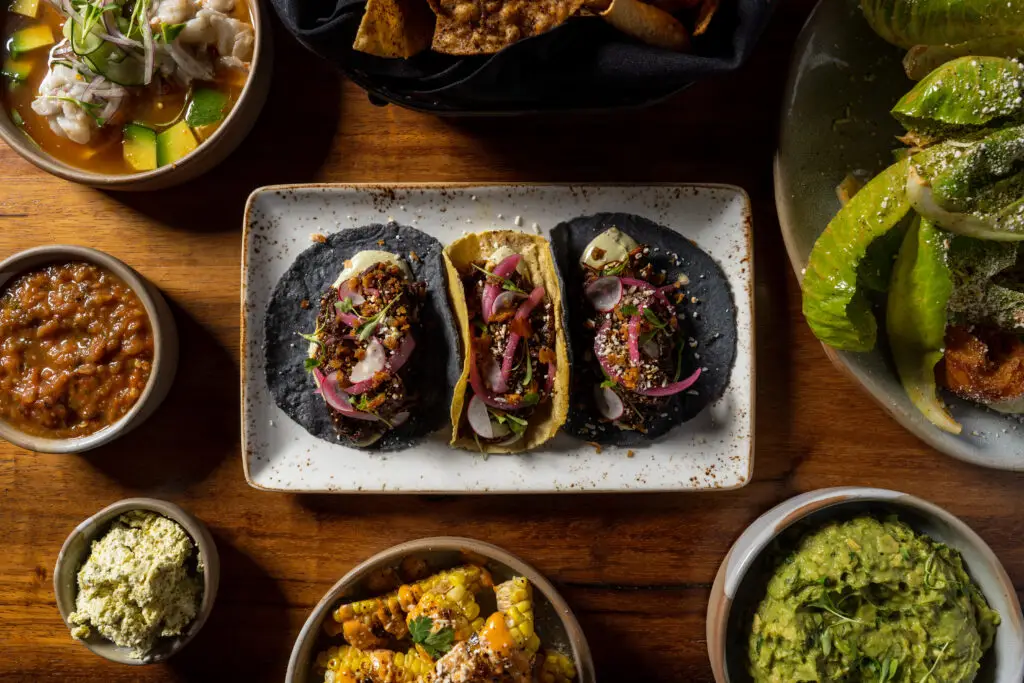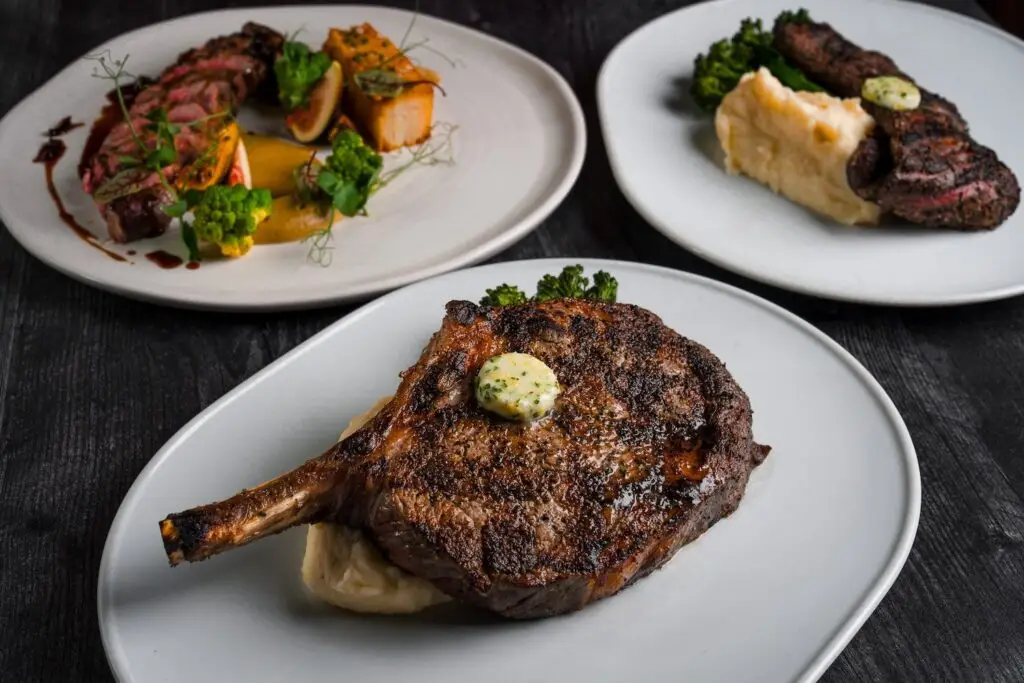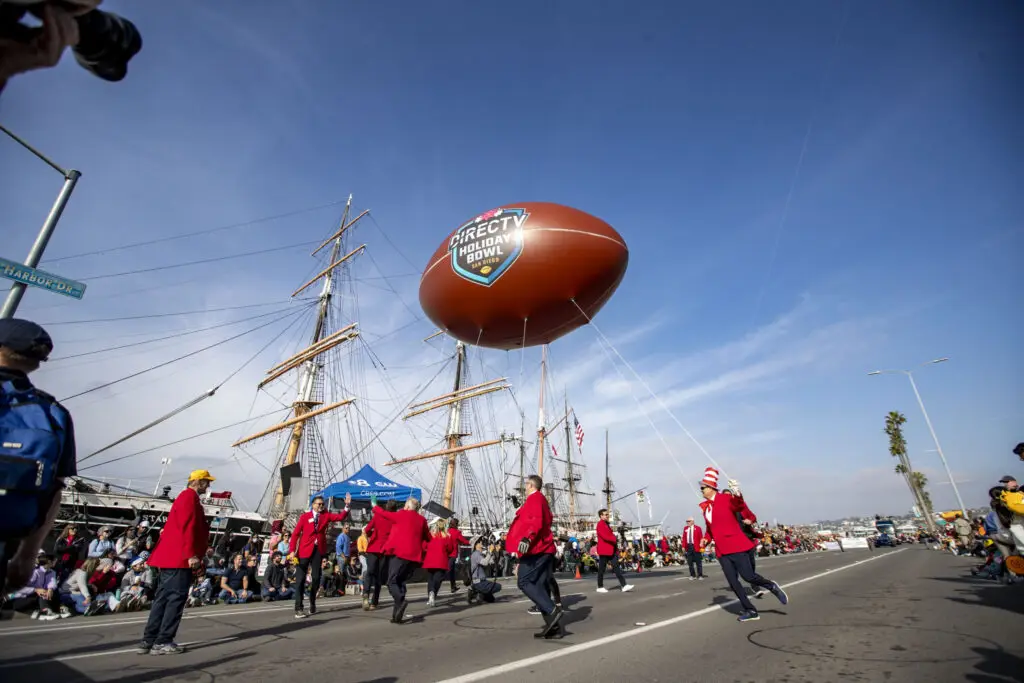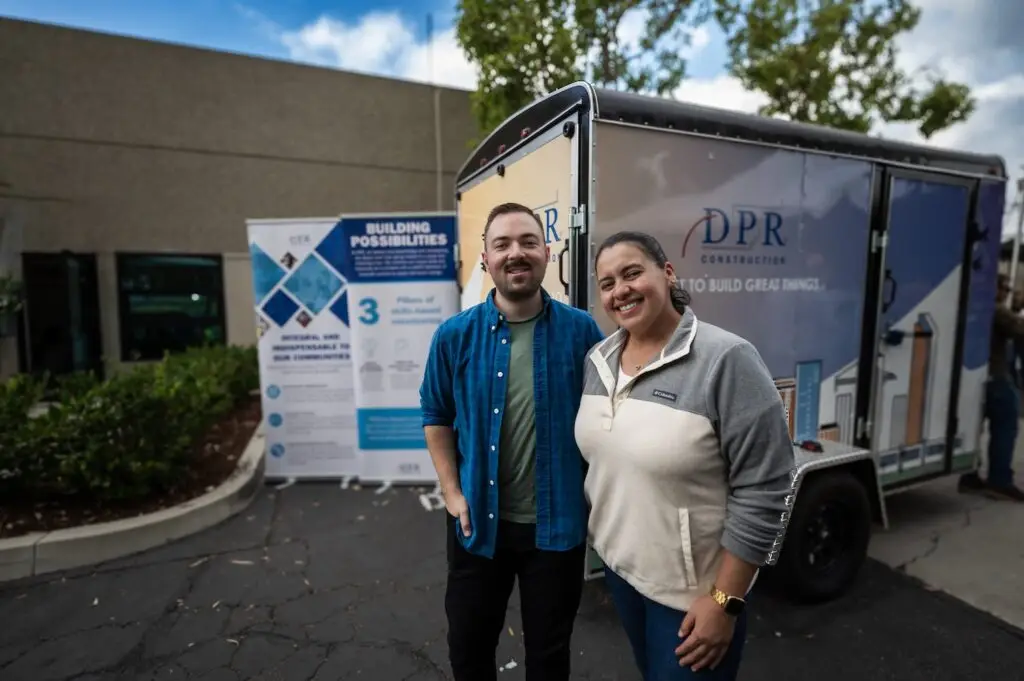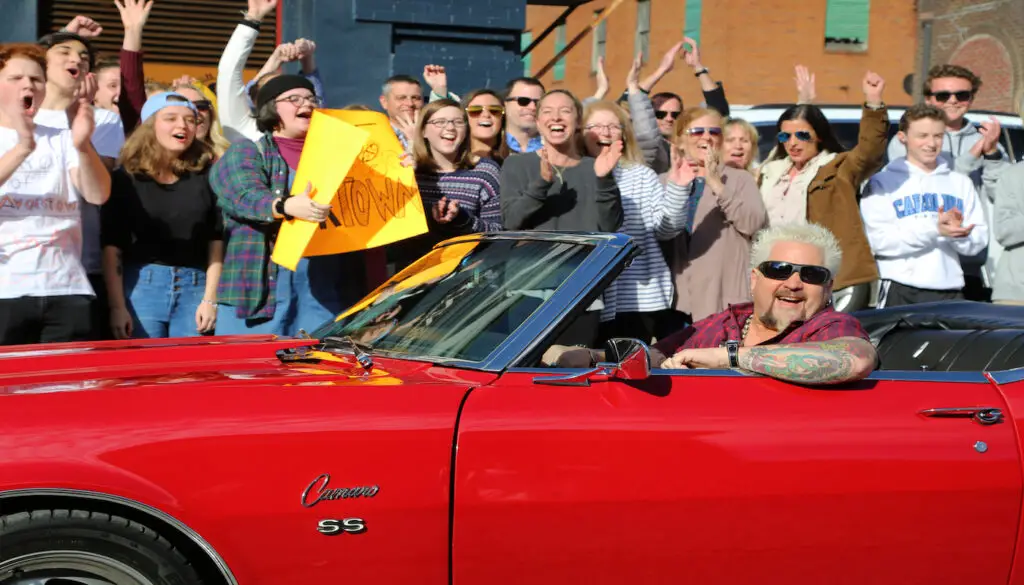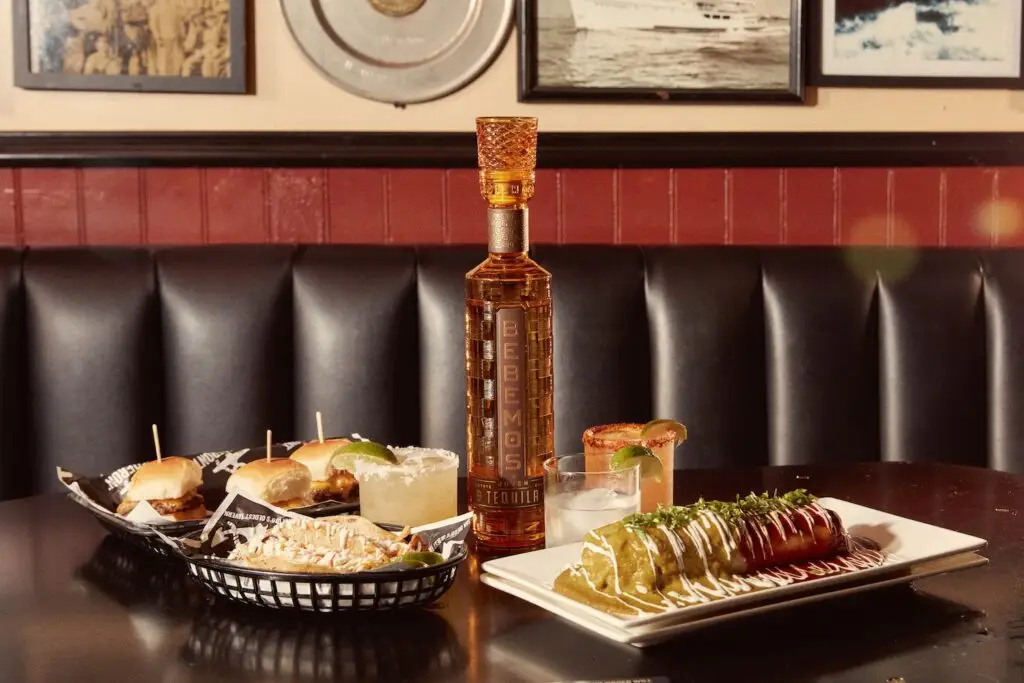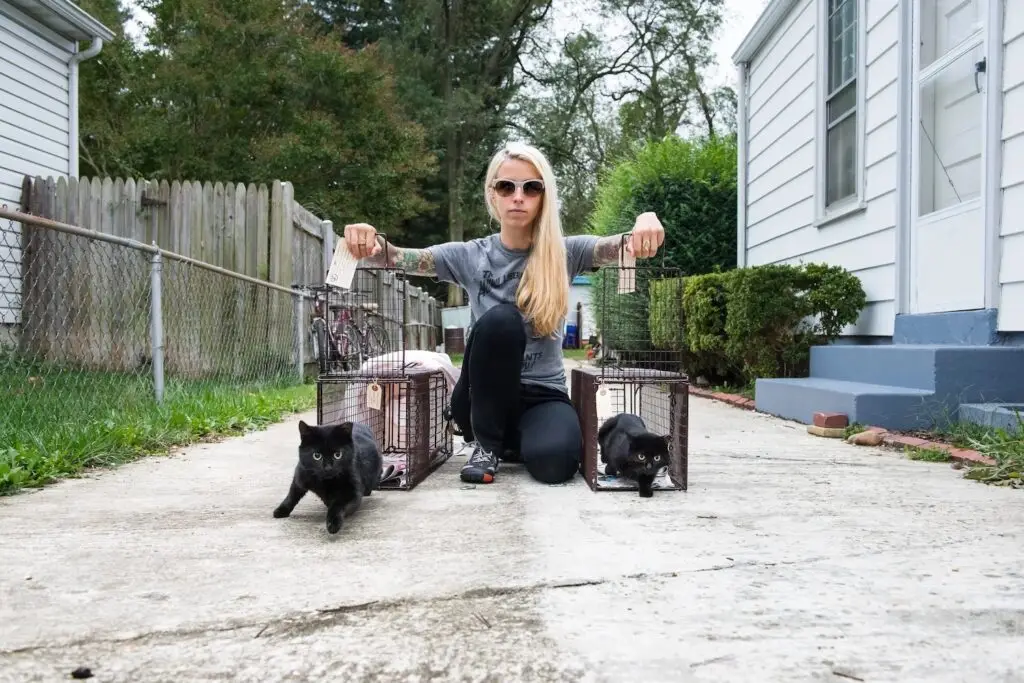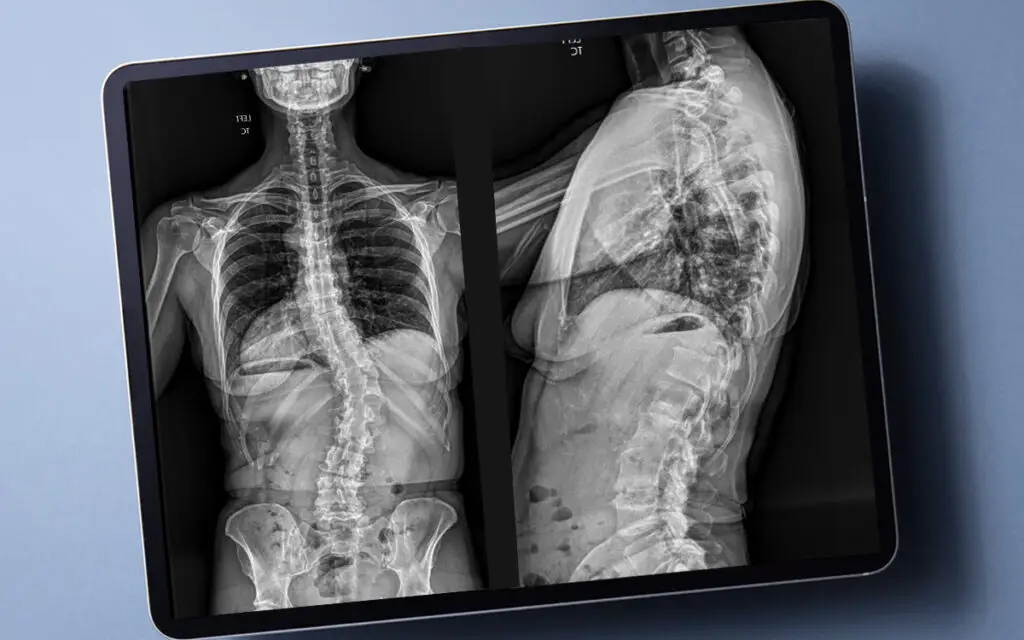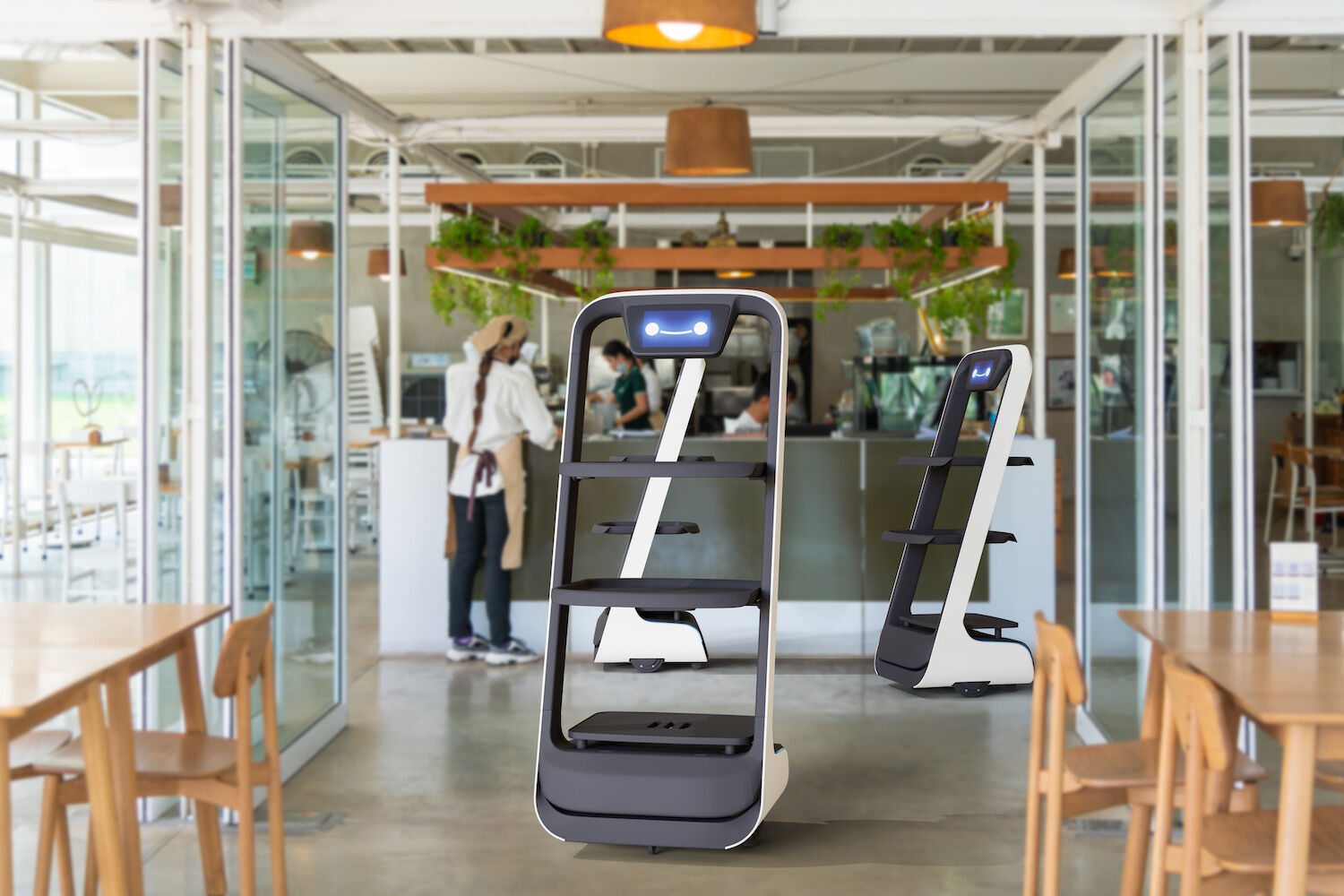
robot-servers-sdm0323.jpeg
Dear internet, I am a tech fraud. I still haven’t used ChatGPT, my Alexa lives out her days unplugged, and, for a Millennial, my Instagram is shamefully sparse. Basically, I’m 67 percent Luddite.
But today, I’m a believer. I see the light as I’m being delivered a sizzling bowl of fried rice and a hot pot by Daash XL at Tofu House off El Cajon Boulevard. Daash XL is my server—well, food runner—who also happens to be a robot.
Looking something like a shoe rack mixed with a Dyson air purifier, this type of mechanical workhorse manufactured by Daash Robotics is becoming more common by food establishments of a certain scale; in San Diego that means smaller, typically franchised locations.
We found a number of restaurants across the city utilizing robots in some capacity (Phở Ca Dao & Grill, Mamma Ramona’s Restaurant, Tofu House, Hai di La, Lola 55). Though robot servers aren’t a new concept (according to the Guinness Book of World Records, the first debuted at a South Pasadena Chinese food restaurant in 1983), their popularity has risen due to the complicated equation of the exodus of hospitality workers post-Covid, hygiene and safety issues, and surging labor costs.
According to the U.S. Bureau of Labor Statistics, out of the 4 million U.S. jobs left in October of 2022, the hospitality industry had the highest quit rate amongst the major industries, with a rate of 5.5%. That totals approximately 220,000 people opting out of the hospitality workforce in a single month.
Saving money on labor and filling the void for those who have left hospitality because of low pay or lack of fulfillment are the top two reasons for leaving the industry, according to a recent poll by McKinsey & Company.
Enter robots.
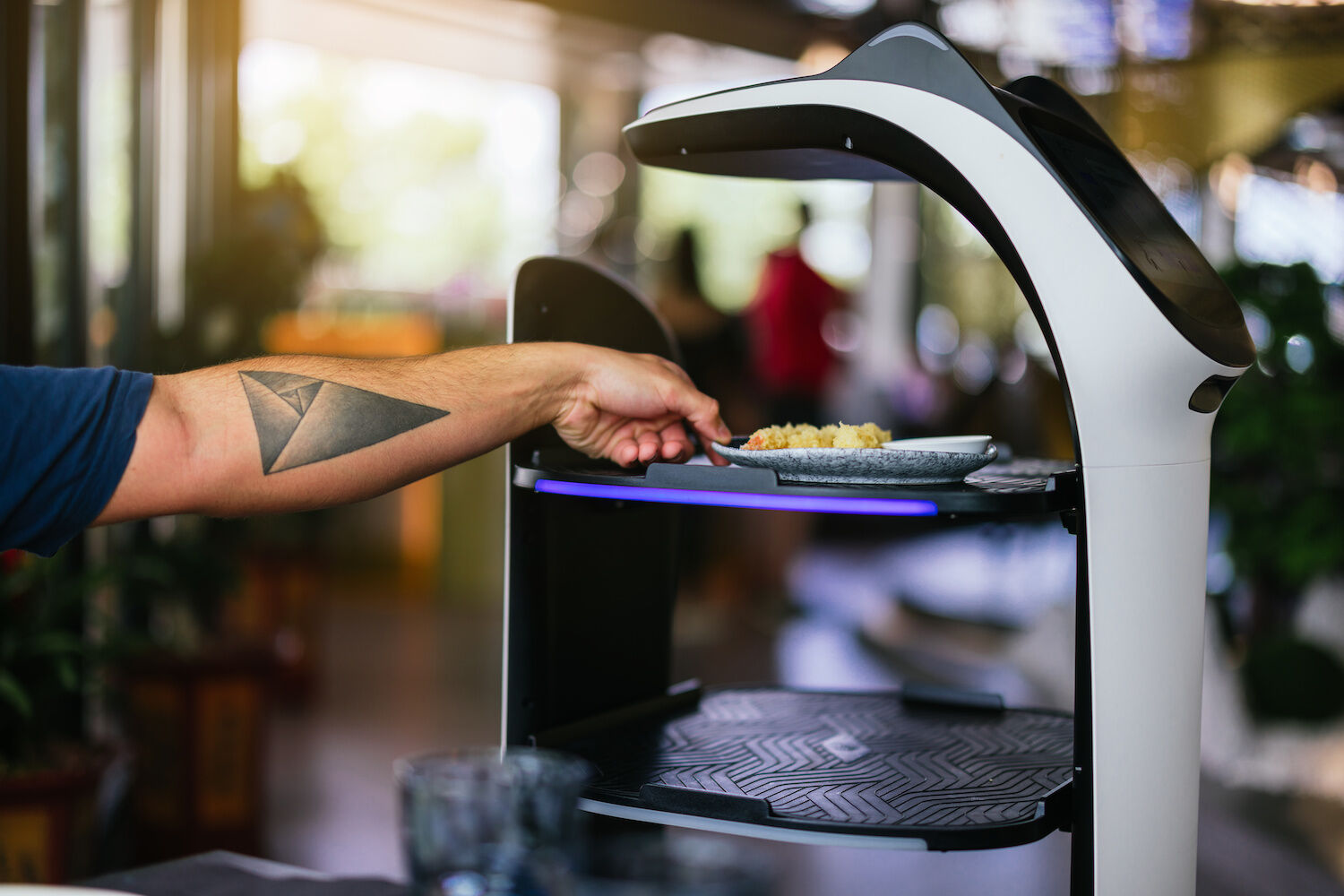
robot-serving-food-sdm0323.jpeg
“Normally, before I [had] the robot, I needed at least two people in front,” says Ahn T. Nguyen (who goes by Tony), owner of this College Area Tofu House.
A Ph.D.-decorated U.S. Navy veteran, Nguyen has used his past experiences to sharpen his skills as a businessman in this new venture. With the variable hours of restaurant work, the labor line item on profit and loss reports is the most crucial—and it’s often the Achilles’ heel for smaller restaurants. Nguyen’s decision to employ an unpaid, non-living employee could not have come at a better time.
As of January 1 of this year, San Diego’s minimum wage has increased to $16.30, up $1.30 from its former mandate. Most restaurant shifts range from six to eight hours (when overtime hits), and a typical floor staff roster includes several cooks, dishwashers, servers, hosts, bartenders, managers, food runners, and bussers. Start multiplying by 16.3, and the math becomes staggering to simply staff a restaurant.
Despite those costs, Nguyen concedes that he won’t go full robot, still wanting to do his part as a business owner and offer people living wages. “So, having the robot does not take away from employment,” says Nguyen. “I’m going to still need [employees].”
It’s true. His Daash XL is simply a conveyor belt on techno-haunches. Once the robot has taken its cues from the CGI-like mapping system (digital dots are placed on the ceiling to guide the robot) and it arrives at your table, servers are at the ready to take the food off Daash’s shelves and place it in front of you (they call them hot pots for a reason).
Nguyen has had extremely good luck with his Daash XL. “I have [had the] robot for about a year for now. I haven’t had any problem[s] at all,” he says. The machine’s smooth operation is a relief, considering it can be a $20,000 investment. Some companies like Daash Robotics, Richtech Robotics, and Keenon have financing and lease options available, which is what Nguyen opted for at $600 a month. Which, if we’re keeping score, is far less than even a weekly salary for a full-time employee.
Other companies are starting to crop up in this market as well, with high hopes of large-scale, skilled use to maximize the productivity of existing staff, giving them more time to spend with their clientele. One such company is Backbar Solutions, a local robotics startup working to reimagine and possibly eliminate the traditional role of the bartender with their machine called Backbar One.
How does it work? Human employees key in a cocktail on a point-of-sale machine as normal before choosing the correct glassware for the rink. Next, Backbar One receives the order, fills the designated glass with ice, dispenses the cocktail, and keeps it in a pickup area.
Hotspots with well-known cocktail programs like East Village’s Lola55 have picked up these machines and placed them on the bartop. Lindsey Treankler, Lola55’s general manager admits that their reason for collaborating with the company “was really a matter of saving labor and trying to maximize everyone’s ability.”
The technology is equipped with the ability to hold “28 liquors, 16 house mixes, and four syrups,” making it a very efficient—if not boring—barkeep. But there’s room for humanity in its utility by giving the actual employees more time to spend with their guests, which usually corresponds to higher tips. “It cuts my drink-making time from five minutes to 30 seconds,” Brandao says. All the more time to schmooze with guests.
But apart from circumventing costs, robots are just plain fun. Their novelty adds to the overall dining experience. “It’s a talking point, too, like, ‘What is that?” says Treankler. “We have people who will sit at the bar and just watch it.”
If fine dining has tableside flambés, consider the vaguely anthropomorphized Daash and the waterfalling Backbar One their version of dinner and a show.
When asked if he’d ever get rid of the robot, Tofu House’s Nguyen emphasizes, “I don’t think so. However, if, you know, something happened with the robot, of course I’d have to bring more labor in, but the robot really, really helps out and entertains my customers.”
PARTNER CONTENT
The Great Resignation, pandemic-born hygiene concerns, and the rising costs for small business owners, means AI may be offering a way to keep our epicurean escapes affordable. Or, at the very least, a bit more entertaining; even for us Luddites.

